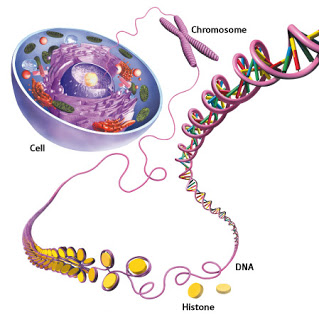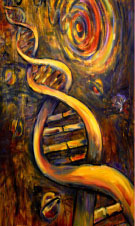Several papers have emerged over the last year or so indicating transgenerational effects that influence the behavior and/or physiology of offspring. For example, a recent study in Nature from Margaret Morris’s group at the University of New South Wales proposes that obese father’s transmit an epigenetic signature through the germ line to female offspring, resulting in impaired beta cell function, impaired insulin secretion and glucose intolerance (Ng et al. Nature 2010). Other recent studies have found similar evidence for paternal inheritance of non-genetic information (for example, see Pentinat et al. Endocrinology 2010; Nelson et al. Epigenomics 2010). However, an outstanding issue relates to the identity of the underlying molecular mechanisms that are involved in these effects. In this blog entry, I highlight some emerging pathways that might potentially contribute to epigenetic inheritance through the germ line.
Two major studies have characterized modified histones in human and mouse sperm (Hammoud et al. Nature 2009; Brykczynska et al. Nat Struc Mol Biol 2010). Previously, it was thought that modified histones were unlikely to be a major component of the highly compact chromatin contained in sperm. However, these two studies indicate that approximately 30% of human promoters contain modified histones. Further, many of these epigenetic signatures are conserved between humans and mice. It has been postulated that these histone signatures are retained in the zygote and play an important role at early stages of development in offspring. However, direct evidence for this model is not yet strong. Interestingly, two noteworthy studies in C. elegans suggest that modified histones established in the parental germ cells transmit essential information to offspring through the germ line (Furuhashi et al. Epigenetics 2010; Rechtsteiner et al. PLoS Genetics 2010).

Both of these studies pickup on an older study by Susan Strome’s group, in which she found 6 loci, including the H3K36 methyltransferase MES–4 [an NSD homolog], that are required for normal germ cell development in offspring (Capowski et al. Genetics 1991). Null MES-4 mutant offspring undergo normal germ cell development when MES–4 is expressed by the mother, but not if the mother is homozygous. Thus, a transgenerational maternal effect occurs. In the two most recent studies, it was found that MES–4 establishes H3K36 trimethylated histone marks independent of transcription, and this maternally established epigenetic signature is required for normal germ cell development in offspring. The authors propose that MES–4 transmits a memory of gene expression in the parental germline to offspring.
Taken together, these early observations suggest that epigenetic signatures in the form of modified histones in eggs and/or sperm might impact upon gene expression and the development and physiology of offspring.

